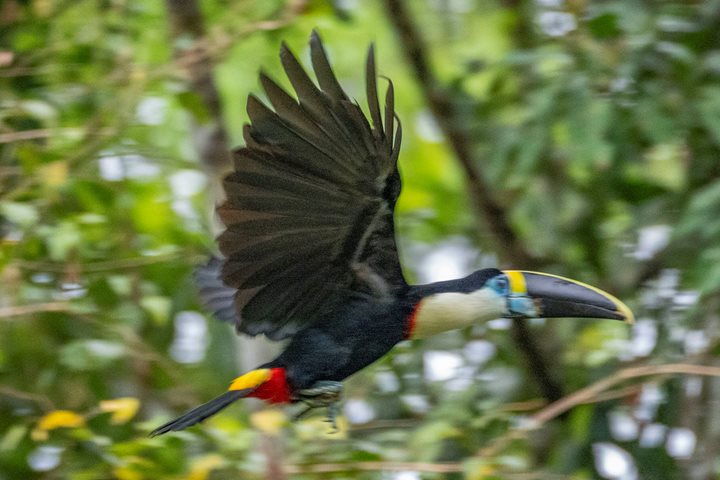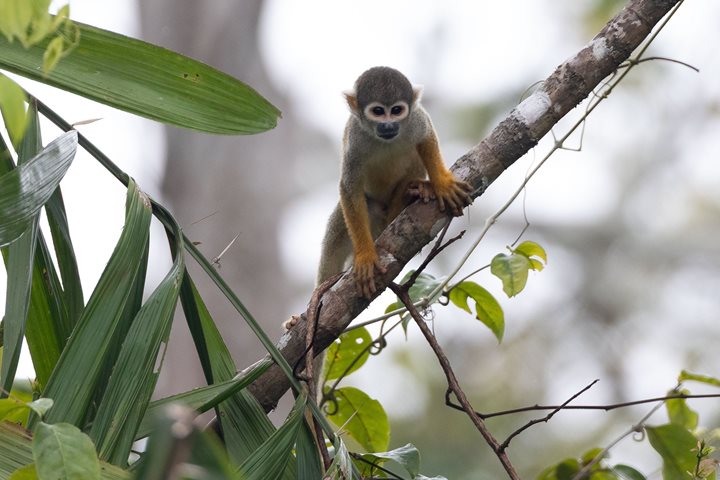This morning, we again woke up to the sound of birds. We boarded skiffs and set out to explore the Iricahua River. We were greeted with many new bird sightings, including greater anis, common pauraques, and colored trogons. The impressive spotting skills of our naturalists are rubbing off on us. This morning, a few of our guests spotted new and exciting animals.
One of these sightings was the queen anaconda, the largest snake in the Amazon. We were able to peer through a pocket of vegetation and get a quick glimpse of its head. After reviewing the photographs, we realized it was covered in mosquitoes.
We have seen many pairs of blue-and-yellow macaws on this expedition, but we hadn’t seen any perching until today. Although they were a bit distant, it was very exciting to get a good look at them while they were stationary. These are amongst the largest and noisiest parrots of the Amazon. They live a long life, up to 40 years. Macaws feed on green fruits and are generally understood to be monogamous.
Midday, our experienced team of officers on the bridge brought us to another fantastic location. After a delicious lunch prepared by our galley, we had a very informative and insightful presentation from naturalist Javier Arbildo.
In the afternoon, we had the chance to explore another amazing tributary called the Yarapa via skiff. This river flows into the Ucayali River near a small community called Puerto Miguel. As we explored, we had many amazing encounters with wildlife. We observed two species of monkeys that we hadn’t yet seen on our voyage: the Isabel’s monk saki and the woolly monkey.







